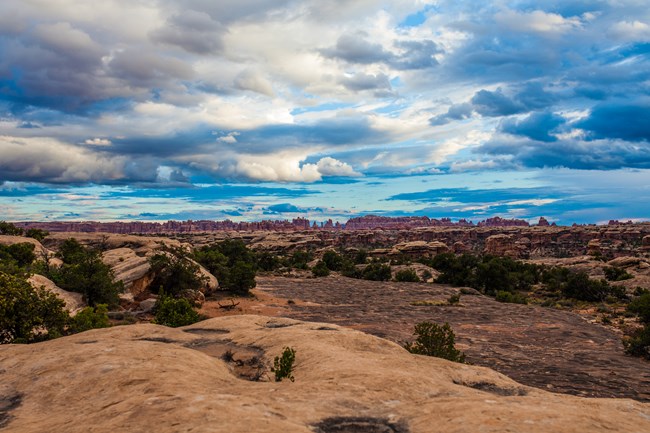
NPS Photo \ Emily Ogden
Overview
The Canyonlands National Park has a variety of plant species from tiny lichens clinging to sandstone to stately cottonwoods growing in canyon bottoms. Wildflowers bloom in spring, cacti appear among knobby biological soil crust, and bunch grasses grow throughout the open country. These varied communities and ecosystems allow scientists to research how plants adapt to a changing world.The Canyonlands National Park vegetation mapping project delivers many geospatial and vegetation data products, including an in-depth project report discussing methods and results, which include descriptions to vegetation associations, field keys to vegetation associations, map classification, and map-class descriptions. The suite of products also includes a database of vegetation plots, verification sites, validation sites, and accuracy assessment (AA) sites; digital images of field sites; field data sheets; digital aerial imagery; hardcopy and digital maps; a contingency table listing AA results; and a geodatabase of vegetation and land cover (map layer), field sites (vegetation plots, verification sites, validation sites, and AA sites), aerial imagery index, project boundary, and metadata.
Products
The products of vegetation mapping projects are stored and managed in the National Park Service's Data Store, a repository for documents and publications relating to park resources. From the highlighted items below, click on the type of information you are looking for.
Last updated: October 16, 2018
